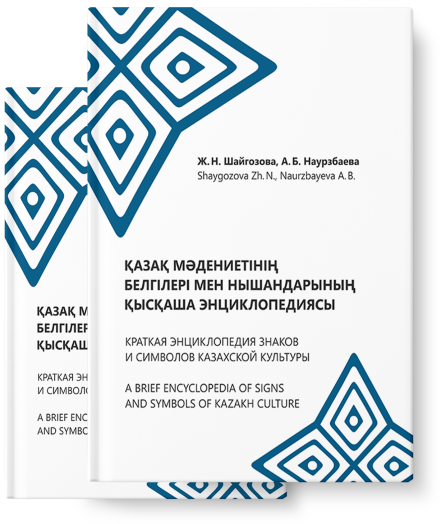
A short encyclopedia of
Signs and symbols of
Kazakh culture

The horse as such is the oldest and one of the most important elements of the Indo-European and Indo-Iranian cultural code. Since ancient times, the horse symbolizes the sun, life and at the same time the ritual sacrifice. The image of the horse is a central and “eternal” symbol in the worldview of Kazakh nomads. Therefore, in traditional Kazakh mythopoetics, the horse is a sacred figure with which a variety of rites, rituals and beliefs are associated. A number of patterns are associated with it, and the imprint of a horse’s hoof “attaban” is called “perishteniñ izi” – “angel’s track”.
A handful of earth on which the imprint of a horse’s hoof was left was often used for ritual practices. As a talisman or bringer of salvation, it was placed in the cradle of a child, wrapped in a cloth, or a pinch of earth was added to the water in which the child was bathed. This water was considered to have healing properties.
Graphically, the design itself is an octagonal medallion divided into four parts. Semantically, the horse and its derivatives in the form of an ornament usually represent material prosperity. It is associated with masculinity and has positive symbolism. The headdress of a Sak warrior (Issyk Barrow) most vividly demonstrates the concept of the horse as a symbol of the sun.

